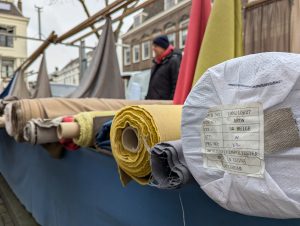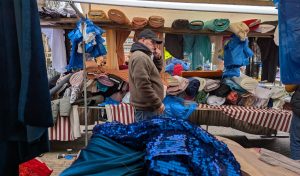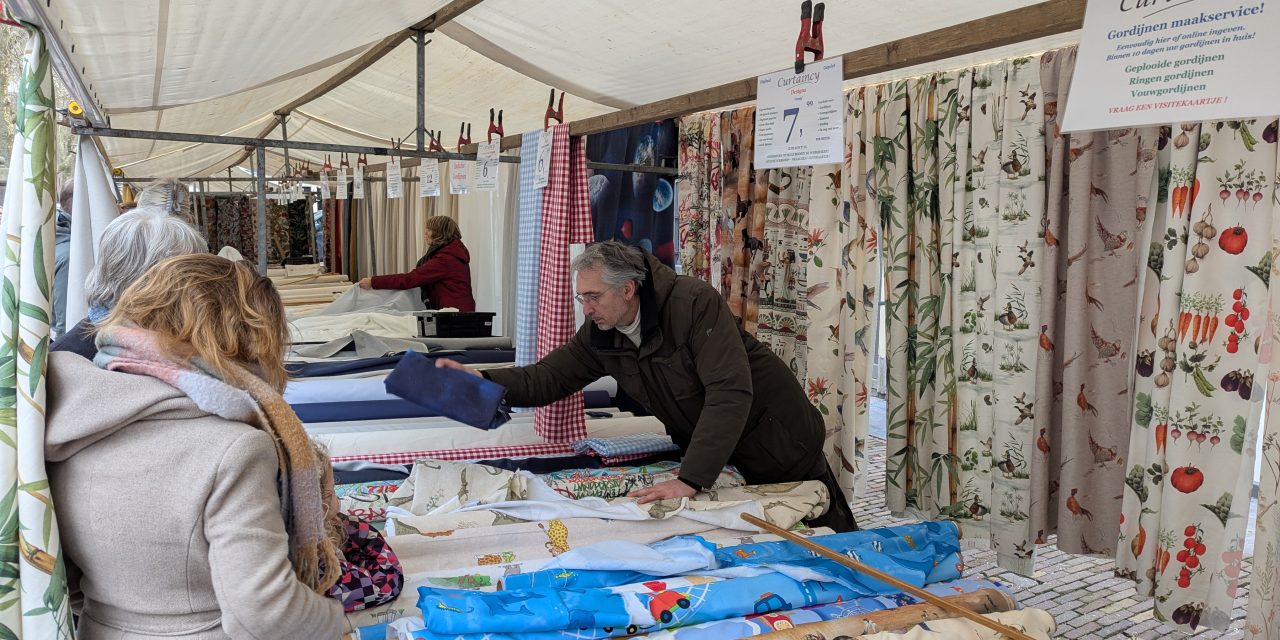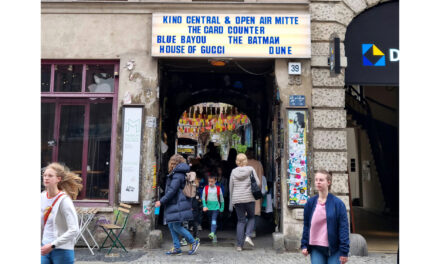Everyone is always telling you to shop local, from your favourite politician to your smarmiest neighbour, it’s a message you can’t escape from. Shop local, shop sustainable. The assumption is the two go hand in hand, but is that really the case?
Every Saturday morning in the heart of Utrecht, Breedstraat is transformed into Lapjesmarkt, the oldest and largest textile market in the Netherlands. Each vendor crowding the street, competing for attention from passersby. It’s easy to imagine that nothing has changed and that these same vendors flogged their wares here 400 years ago when the market first began. As soon as the illusion is setting in, you are dragged back to the 21st century by the packaging – which on closer inspection reads ‘Made in China’.

Vendor displaying his wares, the packaging clearly states ‘Made in China’
While these vendors may not have been selling their wares four centuries ago, there are still several long-tenured members including Stephanie, who has worked at the market for over three decades. “We’re the exception here,” she said, pointing to her stall, “we only sell fabrics produced in Holland. Over the last 10 years or so that’s become rare. Most stalls bring products in from all over the world, but mostly China.”
Therefore, the sustainability of these local markets must be called into question, right? Not necessarily says PhD researcher Lara-Marie Bodirsky, who is working on ‘Accelerating the Transition to a Circular Textile Economy’, “if you talk about fabrics, you probably have a different reason to buy them. If I were to go buy fabrics, I would buy them to make my own garments. And I think then the whole mindset comes into play…when I make something, I am very careful about how I care for it, and I wear it a lot more often, and I make it with the intention that I like it for a long time. I know the effort that goes in there.”

Vendor taking a brief break surrounded by his products
While consumer behaviour is important, Lara insists policymakers must act too. Recent policies have had varying success, take President Trump’s recent tariffs on foreign goods for example. In 2018 the Department of Commerce revealed this method was easily exploitable and has a greater impact on the domestic consumer. On the other hand, the EU has launched a promising new campaign called the Extended Producer Responsibility model, “this is the idea that the producers are responsible for the product, even after they are sold on the market,” Lara explains, “then that money can be used for circularity, for example, for infrastructure, market development, recycling, you name it.”
Today, local textile markets occupy a grey area, while better than buying from fast fashion sites, the products are subject to the same unsustainable farming methods. A 2021 study showed that almost 2000 liters of water are needed to produce 1kg of cotton, but this varies drastically from country to country with Brazil requiring just 17 litres of water while Turkmenistan needs nearly 14,000 liters.
Despite this Lara still believes these markets can be part of the circular textile economy, as long as there is a change in the overconsumption mindset associated with fast fashion, “We need to consume less, and we need to use our items more because, I think on average, people really don’t use items as much as they would last in many cases”.




